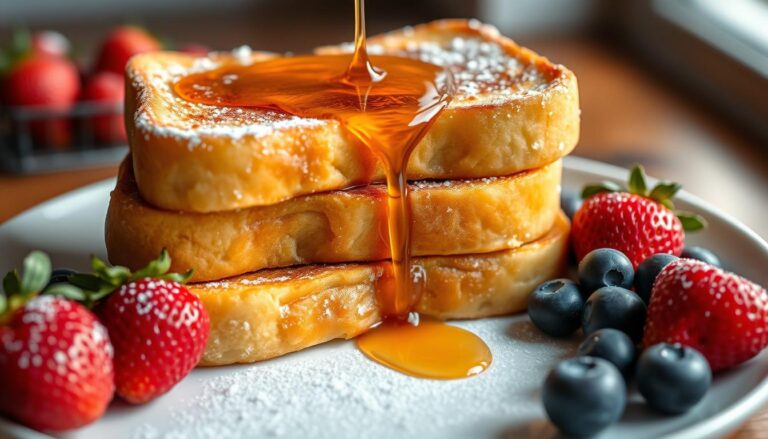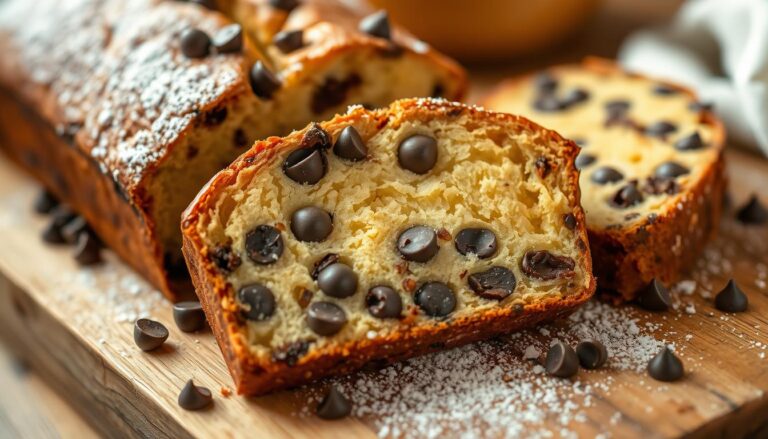The Best Fluffy Pancakes recipe you will fall in love with. Full of tips and tricks to help you make the best pancakes.
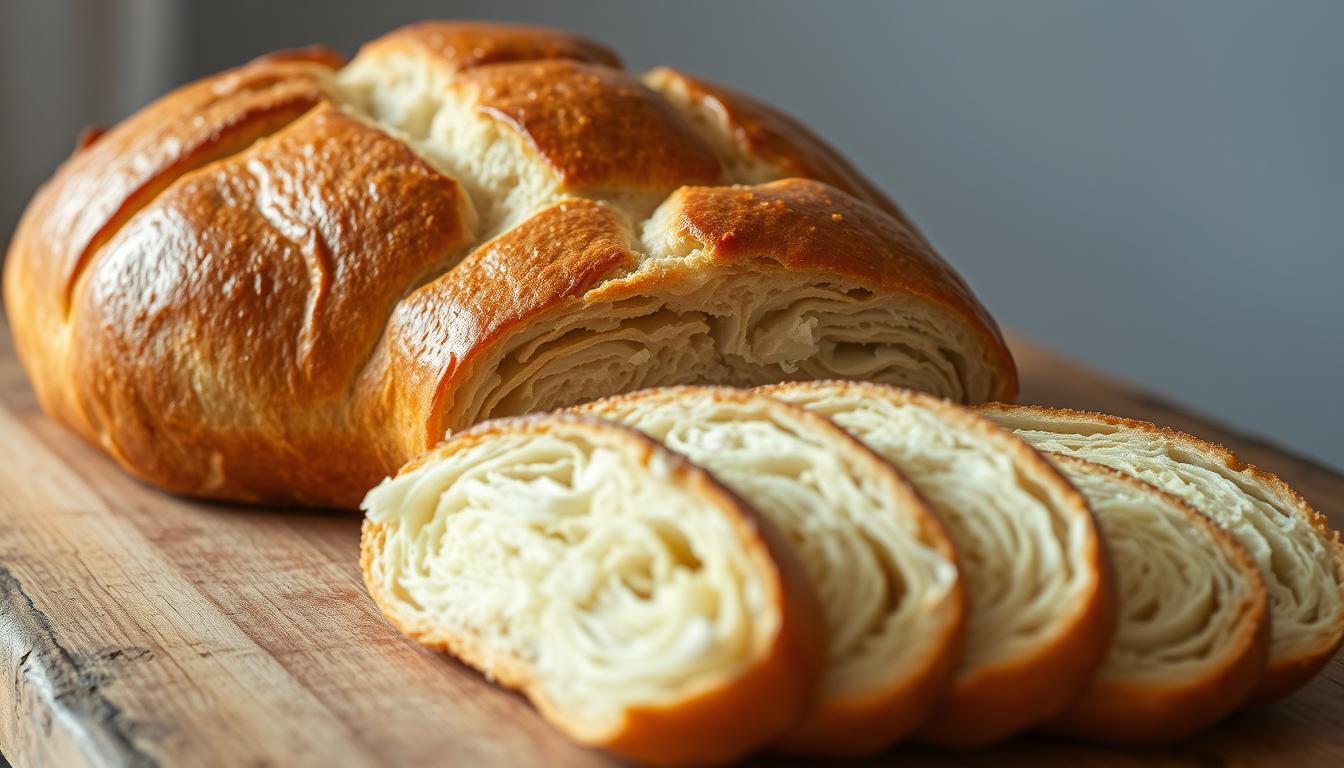
Cabbage Bread Recipe: 5 Simple Steps for a Perfect Loaf
Welcome to my cabbage bread recipe, a delicious and hearty dish that combines the savory flavor of cabbage with the comfort of freshly baked bread. This recipe, passed down through generations, has been simplified to make it easy for anyone to enjoy. Perfect for a quick meal or as a side, this cabbage bread is versatile and flavorful.
The recipe originates from traditional techniques that emphasize simplicity and authenticity. With a focus on ease and clarity, this guide walks you through every step, from preparing the ingredients to baking the perfect loaf. The total time required is manageable, making it a practical choice for any day.
Here’s what you’ll learn in this guide:
Key Takeaways
- Discover a simple 5-step process for making cabbage bread.
- Learn how to prepare ingredients efficiently.
- Understand the importance of resting time for the best flavor.
- Explore variations to customize your cabbage bread.
- Get tips for achieving the perfect bake every time.
Introduction: My Journey with Cabbage Bread
Let me take you on a personal journey through the flavors and traditions that have shaped my love for cabbage bread. This dish holds a special place in my heart, rooted in family traditions passed down through generations.
Personal Connection and Family Traditions
Growing up, I remember the warmth of our family kitchen, where the aroma of sautéed onions and cabbage filled the air. My grandmother, a wise and passionate woman, would spend hours perfecting this recipe, teaching me the importance of patience and precision. She always said, “The key to a great cabbage bread is in the balance of flavors.” Her words have stayed with me, guiding my culinary journey.
Why I Love This Recipe
This recipe is more than just a meal; it’s a connection to my heritage. The finely chopped onion adds a sweetness that complements the earthiness of the cabbage, while a hint of sugar balances the savory tones. I still use the same trusted skillet my grandmother handed down to me, a symbol of the love and tradition behind this dish.
| Ingredient | Role in Recipe |
|---|---|
| Finely Chopped Onion | Adds natural sweetness and depth |
| Sugar | Balances savory flavors |
| Skillet | Enhances caramelization |
Join me as I share this cherished family tradition, blending the past with the present to create a dish that warms both the heart and the home.
The History and Heritage Behind Cabbage Bread
Cabbage bread holds a rich history that spans generations, deeply rooted in the traditions of my family. This dish is more than just a meal; it’s a testament to the resilience and love of those who came before us.
Ancestral Roots and Immigrant Stories
The story begins with my great-grandmother, Granny Annie, who brought this recipe with her on her journey from Poland to America. She carried it in her heart, along with a few cherished belongings, during a time of great turmoil. The recipe became a symbol of hope and continuity in a new land.
Granny Annie’s journey was marked by both joy and loss. She faced countless challenges, including the loss of her home and the struggle to adapt to a new culture. Yet, through it all, she held onto her traditions, including this beloved recipe. It was her way of preserving her heritage and passing it down to future generations.
Evolution of the Recipe Over Time
Over the years, the recipe has evolved, influenced by the changing times and the resources available. While Granny Annie originally used traditional Polish ingredients, later generations adapted it to include locally sourced elements. This evolution has allowed the recipe to remain relevant while still honoring its roots.
The passage of time has only enriched the recipe. Each generation added its own touch, refining the technique and ensuring that the dish remained a cherished family tradition. Today, I proudly continue this legacy, baking cabbage bread that carries the same love and care that Granny Annie instilled in every loaf.
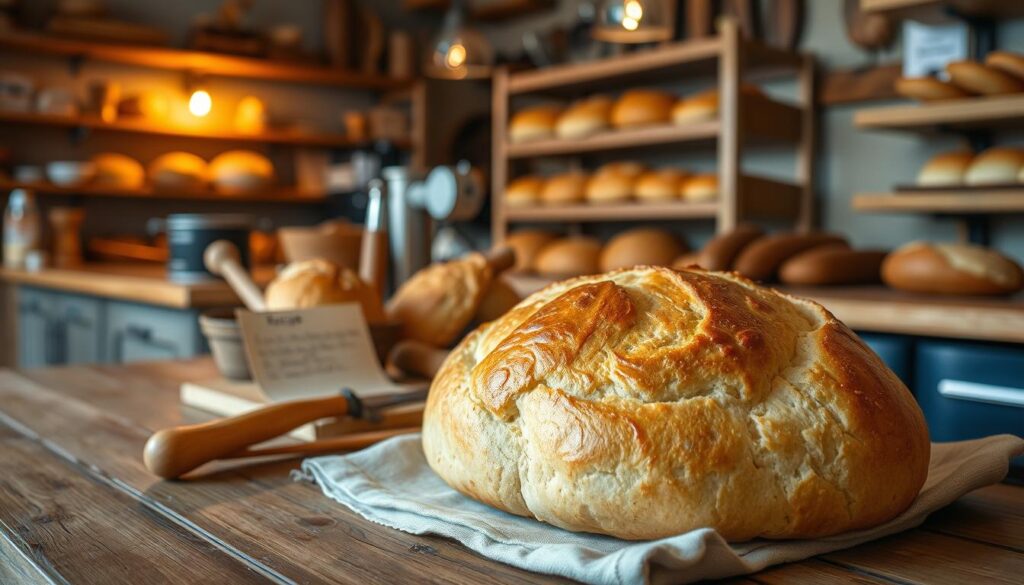
This bread is more than just a meal; it’s a connection to my past and a bridge to my future. Every time I bake it, I’m reminded of the strong women in my family who preserved this tradition through their perseverance and love.
Essential Ingredients & Tools for a Delicious Cabbage Bread
To craft the perfect cabbage bread, it’s crucial to have the right ingredients and tools on hand. Each component plays a vital role in achieving that golden brown crust and soft interior.
Key Ingredients and Their Roles
Let’s break down the essential ingredients:
| Ingredient | Role |
|---|---|
| 3 1/2 cups of flour | Provides structure and texture |
| 1 teaspoon of salt | Enhances flavor |
| 1/4 cup of vegetable oil | Maintains moisture |
| 1 egg | Enriches dough |
| 1/2 cup of sweetened condensed milk | Balances sweetness |
| 4 1/2 teaspoons of active dry yeast | Leavening agent |
| 3/4 cup of warm water | Activates yeast |
| 1/2 head of shredded cabbage | Adds flavor and texture |
Must-Have Kitchen Tools
Having the right tools ensures the baking process is smooth and effective:
- Skillet: Perfect for sautéing the cabbage mixture to a golden brown.
- Bowl: Essential for mixing the dough and letting it rise.
- Pan: A well-greased pan is crucial for baking the bread to perfection.
- Grater: Used to finely shred the cabbage for even distribution.
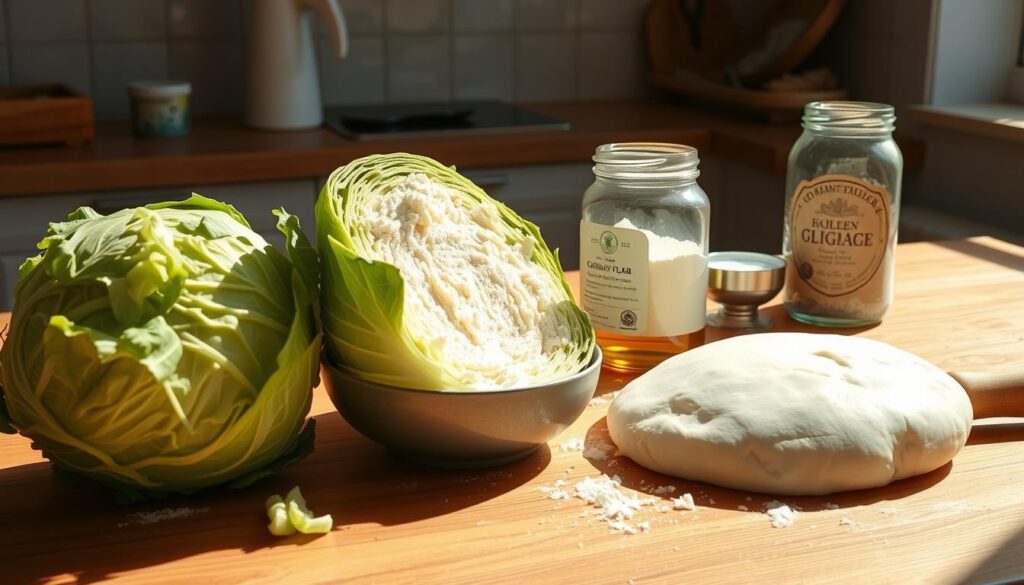
With these ingredients and tools, you’ll be well-equipped to create a mouthwatering cabbage bread that’s both flavorful and visually appealing. Each element, from the skillet to the shredded cabbage, contributes to a delightful baking experience.
Mastering the Cabbage Bread Recipe
Mastering the art of creating delicious cabbage bread involves a few key steps that ensure a perfect loaf every time. From preparing the filling to shaping the dough, each part of the process plays a crucial role in the final result.
Preparing the Cabbage Mixture
The foundation of a great cabbage bread lies in its filling. Start by sautéing finely shredded cabbage and onions in a skillet until they’re soft and fragrant. This step enhances the natural sweetness of the cabbage, creating a flavorful base for your bread. Ensure the mixture is evenly distributed to avoid any overpowering pockets of cabbage.
Mixing and Kneading the Dough
In a large bowl, combine flour, yeast, salt, and a touch of sugar. Gradually add warm water, mixing until a dough forms. Knead the dough on a floured surface for about 10 minutes until it becomes smooth and elastic. This step is vital for developing the gluten, which gives the bread its structure.
Final Shaping and Rising Techniques
Divide the dough into squares, placing a generous portion of the cabbage mixture in the center of each. Fold the dough over the filling, sealing the edges gently. Allow the squares to rise in a warm place for 30-40 minutes, or until they’ve doubled in size. This rising time ensures the bread will be light and airy.
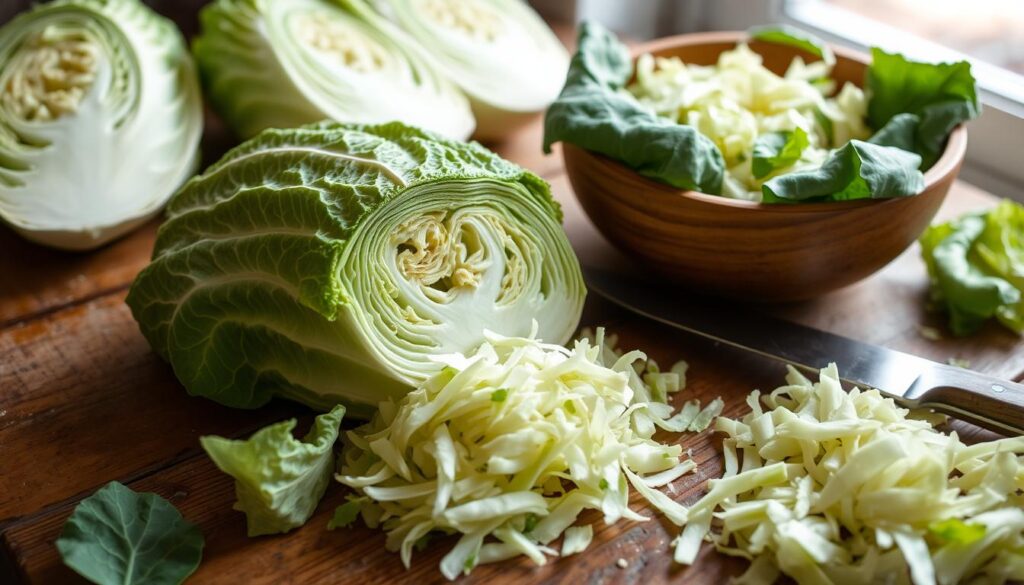
Handling the dough gently during shaping preserves its airy texture. After rising, bake the squares in a preheated oven at 350°F for 20-25 minutes, or until golden brown. The result is a perfectly balanced cabbage bread that’s both flavorful and visually appealing.
Cooking Techniques and Creative Variations
Elevate your dish with these expert tips to make your creation truly special.
Sautéing to Achieve a Golden Brown Finish
Heat a large skillet over medium heat and add a teaspoon of oil. Sauté the mixture, stirring occasionally, until it reaches a rich, golden brown. This step is crucial for developing deep flavors.
Baking Tips for the Perfect Crust
Preheat your oven to 375°F. Place the dough on a greased pan, ensuring even spacing. Bake for 20-25 minutes until the crust is golden. For a softer crust, brush with a little milk before baking.
Creative Variations
Add a pinch of salt and a teaspoon of your favorite herbs for extra flavor. Try using rosemary or thyme for a fresh twist. You can also serve this as a side to roast or pork chops for a hearty meal.
For a fun twist, use this bread as a pizza base or as stuffing. Adjust the heat during sautéing to prevent overcooking. Experiment with salt and pepper to find your perfect balance.
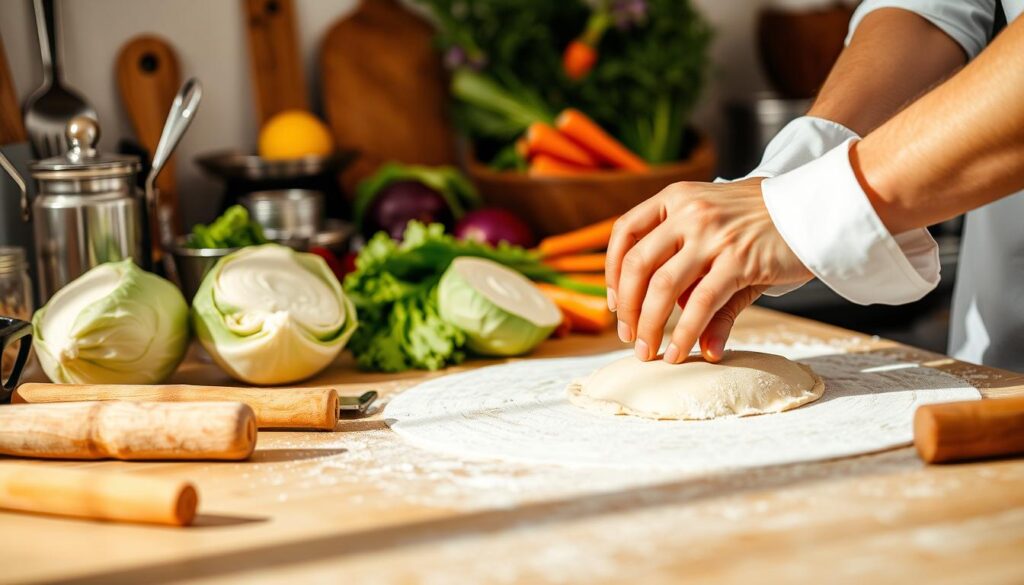
Let your creativity shine and make this dish your own with these simple yet effective tips!
Conclusion
As we conclude this journey through the heartwarming cabbage bread recipe, remember that each step is a testament to tradition and love. From the initial preparation of the finely shredded cabbage to the precise measurements of each cup of flour, every detail matters. The golden brown crust and soft interior are rewards of careful attention to heat and minute counts.
This bread recipe is more than a meal; it’s a legacy. The dough, shaped into perfect squares and baked to perfection, carries the stories of generations. Whether served as a hearty side or transformed into a creative pizza base, it offers endless possibilities.
Thank you for joining me on this culinary adventure. For more cherished family recipes, subscribe to my channel and share your creations. Together, let’s keep the tradition alive—one delicious loaf at a time!
FAQ
What makes this cabbage bread recipe unique?
This recipe stands out because it combines the natural sweetness of cabbage with a hint of savory spices, creating a deliciously balanced flavor. Plus, the addition of egg and sugar helps keep the bread moist and golden.
Can I use a regular oven instead of a skillet?
Absolutely! While a skillet gives a nice crust, you can bake it in a greased 9×9-inch pan at 350°F for about 35-40 minutes, or until a toothpick comes out clean.
How do I achieve the perfect golden-brown crust?
Sautéing the cabbage mixture until it’s lightly caramelized adds a rich flavor and color. Brushing the top with melted butter before baking also helps create that golden finish.
Can I make this recipe ahead of time?
Yes! You can prepare the dough and let it rise in the fridge overnight. When you’re ready, shape it and bake as instructed. It’s a great time-saver for busy days.
What if I don’t have a stand mixer?
No problem! You can mix and knead the dough by hand in a large bowl. It’ll take about 10 minutes of kneading until the dough becomes smooth and elastic.
Can I customize the recipe with other ingredients?
Of course! Feel free to add diced ham, grated cheese, or even some chopped fresh herbs like parsley or dill to give it your own twist. Just keep the base ingredients consistent for the best texture.
How should I store the bread to keep it fresh?
Let the bread cool completely, then wrap it tightly in plastic wrap or aluminum foil and store it at room temperature for up to 3 days. For longer storage, you can freeze it for up to 2 months.
Why is my bread turning out too dense?
Dense bread can happen if the dough isn’t kneaded enough or if it’s overmixed. Make sure to knead until the dough is smooth and elastic, and avoid overworking it after adding the cabbage mixture.
Can I use pre-shredded cabbage?
Yes, pre-shredded cabbage works perfectly. Just give it a quick rinse and pat it dry with a paper towel to remove excess moisture before using it in the recipe.
How do I know when the bread is fully baked?
The bread is done when it’s golden brown on top, sounds hollow when tapped on the bottom, and a toothpick inserted into the center comes out clean. It should also feel light and springy to the touch.


